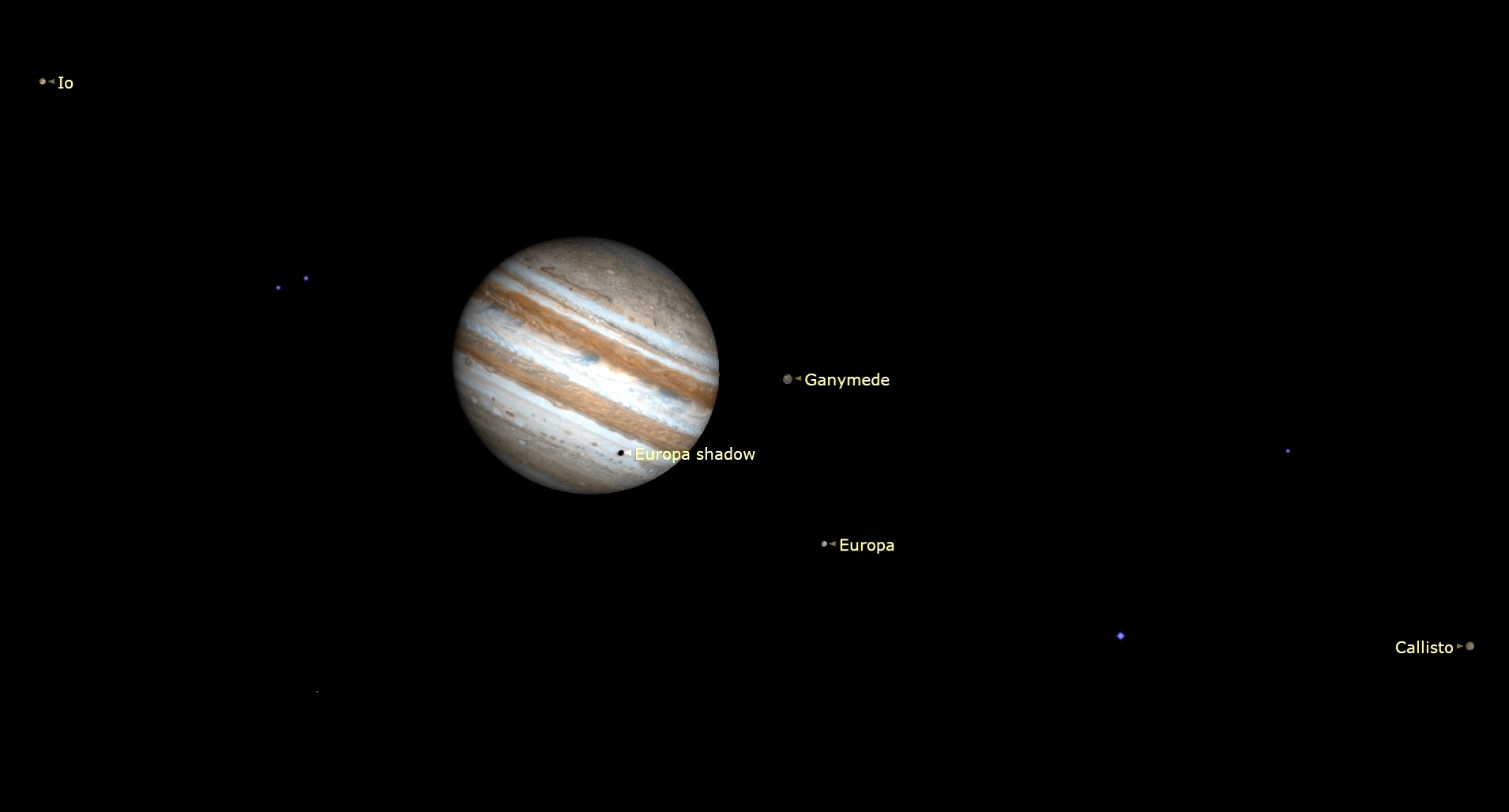See the moon visit Jupiter in the sky tonight (Dec. 1)
The solar system's largest planet will be in conjunction with the moon on the first day of December with the two bodies sharing the same right ascension.

On Thursday (Dec. 1), the moon and Jupiter will be in conjunction sharing the same right ascension in the night sky.
The nine-day-old moon will appear two degrees to the south of Jupiter with the two objects making a close approach to each other, called an appulse.
For skywatchers in New York City, the Jupiter/moon conjunction will become visible at around 4:47 p.m. EST (2147 GMT) when it will be 36 degrees above the horizon to the southeast, according to In the Sky. (Your fist at arm's length corresponds to about ten degrees in the sky.)
Related: What is the moon phase today? Lunar phases 2022
The moon and Jupiter will reach their highest point 47 degrees above the southern horizon at approximately 7:09 p.m. EST (0009 GMT on Dec. 2). The conjunction will remain visible until around 12:20 a.m. EST on Dec. 2 (0520 GMT) when they will both sink below seven degrees over the western horizon.
During the conjunction, the moon and Jupiter will be in the constellation of Pisces with a right ascension of 23h57m00s. The moon will have a magnitude of -12.2 and Jupiter a magnitude of -2.6, with the minus prefix indicating particularly bright objects in the sky over Earth.
The moon and Jupiter will be too widely separated to be visible with a telescope, but the conjunction should be observable with binoculars or with the naked eye in good viewing conditions such as clear and dark skies.
Get the Space.com Newsletter
Breaking space news, the latest updates on rocket launches, skywatching events and more!
Even though the moon and Jupiter will be close together in the sky, this is just a result of perspective from Earth and they remain separated by a tremendous distance in the solar system.

The gas giant, which is the most massive planet in the solar system and its second largest body after the sun, Jupiter, is the fifth planet from our star. At its closest to Earth, the gas giant is 365 million miles (588 million kilometers) away and at its farthest, Jupiter is 601 million miles (968 million km) distant from our planet.
The appearance of proximity isn't the only illusion that perspective performs with the moon and Jupiter. During the conjunction, the moon will appear much larger and brighter than the distant gas giant.
However, this couldn't be a less accurate representation of the two astronomical objects' actual sizes.
Jupiter is so large that NASA estimates it would take as many as 1,300s Earths to fill its volume. In turn, it would take around 50 moons to fill the volume of Earth, meaning that 65,000 moons would be needed to occupy the volume of Jupiter.

Want to get a better look at Jupiter or the moon? We recommend the Celestron Astro Fi 102 as the top pick in our best beginner's telescope guide. Don't forget a moon filter if you'll be looking up at Earth's natural satellite.
This Earth-filled Jupiter would be much denser than the gas giant planet, which is composed predominantly of hydrogen and helium. These elements aren't gas all the way through Jupiter, though. Deep in its atmosphere, the intense pressure compresses the hydrogen gas into a liquid. This gives the planet the solar system's largest ocean, but one composed of liquid hydrogen rather than water.
Even though not composed solely of gas, Jupiter's density is still only a quarter of that of Earth, while the moon is about three-fifths as dense as Earth.
The conjunction between the moon and Jupiter offers skywatchers a good chance to spot Jupiter, one of the five brightest planets over Earth if they are willing to brave the cold of a December evening.
Editor's Note: If you snap the conjunction between Jupiter and the moon and would like to share it with Space.com's readers, send your photo(s), comments, and your name and location to spacephotos@space.com.
Follow us on Twitter @Spacedotcom or on Facebook.
Join our Space Forums to keep talking space on the latest missions, night sky and more! And if you have a news tip, correction or comment, let us know at: community@space.com.

Robert Lea is a science journalist in the U.K. whose articles have been published in Physics World, New Scientist, Astronomy Magazine, All About Space, Newsweek and ZME Science. He also writes about science communication for Elsevier and the European Journal of Physics. Rob holds a bachelor of science degree in physics and astronomy from the U.K.’s Open University. Follow him on Twitter @sciencef1rst.









